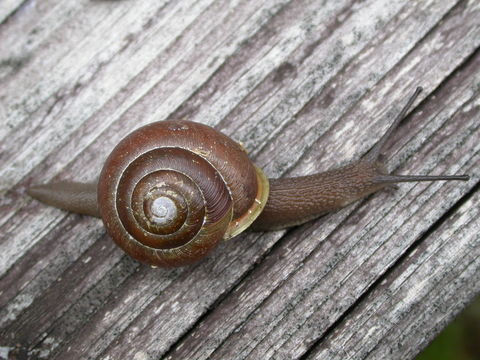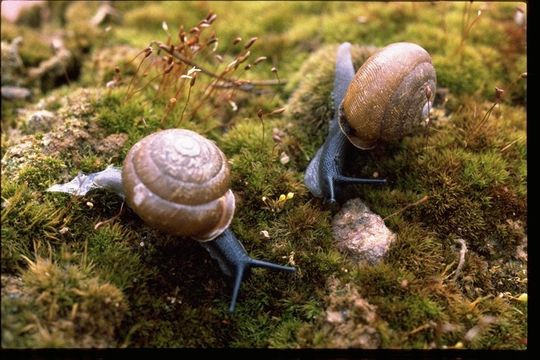Reproduction
 Snails in the Polygyrid family are
monoecious and can produce sexually or asexually. There are many benefits of this type of
reproduction. Snails are generally slow moving and may not encounter another snail in their lifetime, so they are able to
fertilize themselves to reproduce. This does not allow for much
genetic diversity, but it preserves the lineage of each snail
until they are able to encounter another snail to reproduce
sexually.
Snails in the Polygyrid family are
monoecious and can produce sexually or asexually. There are many benefits of this type of
reproduction. Snails are generally slow moving and may not encounter another snail in their lifetime, so they are able to
fertilize themselves to reproduce. This does not allow for much
genetic diversity, but it preserves the lineage of each snail
until they are able to encounter another snail to reproduce
sexually.
Although there is no distinct male or female, one snail will play the role of the female and receive sperm from the other. Often times, the roles are then reversed and the snail that was previously female will inject sperm into the "male." This sometimes must occur multiple times to be successful, and sperm is often stored in the event that another snail to mate with is never encountered.(Wilbur, 1984).
 Snails
have a direct life cycle meaning that they do not go through a
larval stage as many other animals do. Once snails have
successfully cross fertilized, they begin to hunt for a suitable
environment in which to lay their eggs. This is usually a place
that will remain continuously moist and is well protected. Most
snails settle for a hole that they dig in the soil of a moist
forest floor. Once the hole is dug, the snail crawls into it to
wait for fertilization of its available eggs to be complete.
This sometimes can take up to 12 hours. The snail will then
deposit the eggs, leave the pit, cover it with soil, and abandon
it. The eggs will remain in the pit for up to 1 year before the
young snails begin to emerge from the soil.
(Wilbur, 1984).
Snails
have a direct life cycle meaning that they do not go through a
larval stage as many other animals do. Once snails have
successfully cross fertilized, they begin to hunt for a suitable
environment in which to lay their eggs. This is usually a place
that will remain continuously moist and is well protected. Most
snails settle for a hole that they dig in the soil of a moist
forest floor. Once the hole is dug, the snail crawls into it to
wait for fertilization of its available eggs to be complete.
This sometimes can take up to 12 hours. The snail will then
deposit the eggs, leave the pit, cover it with soil, and abandon
it. The eggs will remain in the pit for up to 1 year before the
young snails begin to emerge from the soil.
(Wilbur, 1984).
Visit the Facts Page
Go to the Home Page